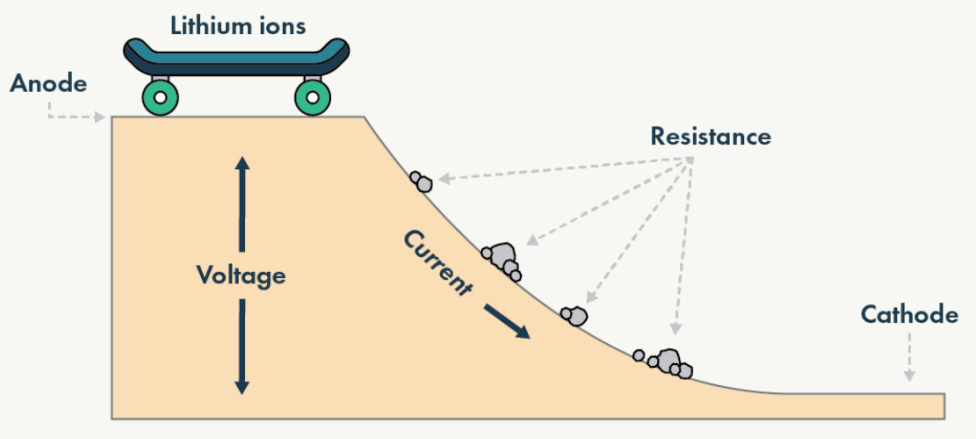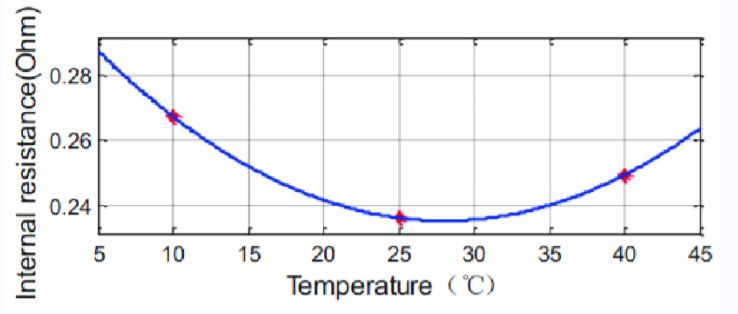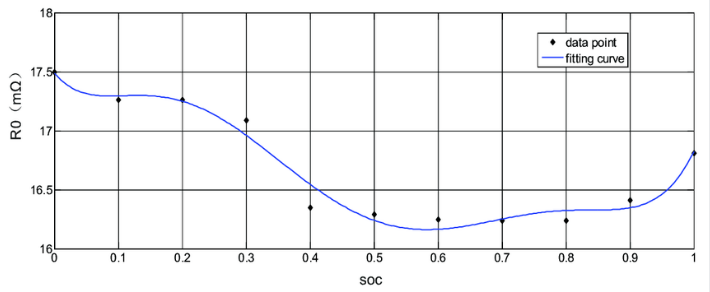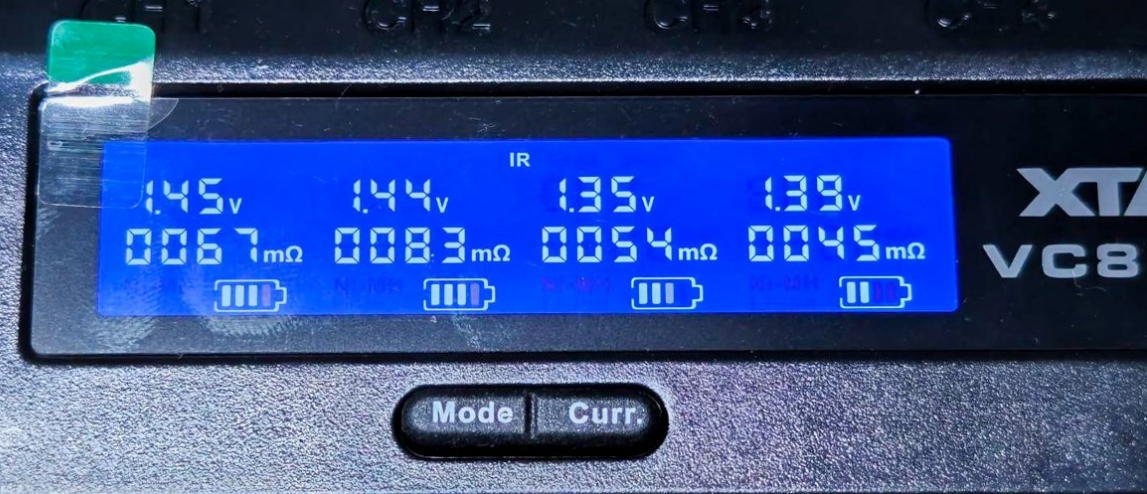Address
5th Floor, No.77 Xinhe Rd, Shangmugu, Pinghu Area, Longgang District, Shenzhen, Guangdong, China
Contact
Email [email protected]
Tell (+86) 755-25507076
5th Floor, No.77 Xinhe Rd, Shangmugu, Pinghu Area, Longgang District, Shenzhen, Guangdong, China
Email [email protected]
Tell (+86) 755-25507076
Batteries are vital for our electronic devices. They act as the heart of gadgets we use daily. Despite our focus on capacity and charging speed, we often overlook a crucial factor—internal resistance. Internal resistance is like a secret code for batteries, impacting how well they perform, how fast they charge, and how long they last.
This article will explore the mysteries of internal resistance in rechargeable cylindrical batteries. It aims to help you make smarter choices when picking a charger.
Imagine the battery as an energy warehouse. The internal resistance is like a guard at the entrance, regulating the flow of energy (current) in and out of the warehouse. This guard causes obstacles for the current, similar to passing through a security check at the entrance. These obstacles make the current flow less smoothly, affecting the battery’s performance.
 Image source: https://www.quantumscape.com/resources/blog/temperature-in-battery-development/
Image source: https://www.quantumscape.com/resources/blog/temperature-in-battery-development/
But where does this internal resistance come from? It originates from the complex chemical processes and physical structure within the battery. Let’s dig deeper into this discussion.
● Chemical Reactions in Batteries: Inside a battery, there are complicated chemical reactions. These involve electrons and ions moving between the positive and negative parts. This movement faces resistance, creating internal resistance.
● Physical Structure of Batteries: Inside a battery, there are positive and negative parts, electrolyte, and a separator. The structure and materials of these parts affect the flow of electric current. For instance, factors like electrolyte concentration, electrode material, and separator characteristics introduce resistance. This makes internal resistance go up.
●Temperature Impact: Temperature has a big effect on battery performance. In lower temperatures, reactions slow down, causing internal resistance to rise. In higher temperatures, reactions become too active, also increasing internal resistance.

● Battery Aging: As a battery gets used, it ages. Chemical reactions and physical changes on the inside contribute to this aging process. This aging causes wear and changes in the materials, making internal resistance go up.
So, internal resistance doesn’t come from a single factor. It’s connected to various factors inside the battery.
Internal resistance in a battery has a big impact on devices and the battery itself. These effects are crucial for the performance, lifespan, and safety of the equipment.
● Charging Slows Down: Internal resistance in batteries can slow down charging. High internal resistance means charging speed might be limited, even with a powerful charger.
● Unstable Device Performance: High internal resistance in a battery can make device performance unstable. When the device needs a lot of power, this resistance may prevent it from providing enough current. This might lead to slower operation and longer application response times. It can affect the stability and performance of the device with different workloads.

Change curve of internal resistance of battery discharge
● Shortened Battery Life: Internal resistance in a battery generates heat, aging the battery faster. This heat speeds up chemical reactions, reducing the actual battery capacity. A decrease in usable capacity shortens the battery life. This means the battery needs more frequent charging and replacement.
● Increased Safety Risks: High internal resistance in a battery can be unsafe. It makes the battery produce too much heat during charging and discharging, raising the risk of overheating, inefficient charging, or even fire. These impacts stress the need to check and manage internal resistance.
● Charging Strategy Failure: Internal resistance can mess up your usual charging plan. When it is high, it restricts the charging current. Battery voltage takes a hit, disrupting the expected charging outcome. This disruption can result in longer charging times and the inability to fully juice up the battery. Overall, it impacts how smoothly your device charges in day-to-day use.
In practical use, changes in battery internal resistance can be a gradual process. It may be influenced by various factors. An increase in internal resistance often indicates aging or damage to the battery. To slow down this increase, it is a wise decision to choose a smart charger with an IR test function.
Such a charger is not just for charging. It is also an intelligent “doctor” in checking your battery health.
There are few chargers on the market that can test the internal resistance of batteries. XTAR, as a brand with a good reputation for 17 years, makes all their Li-ion battery chargers automatically detect the battery’s internal resistance before starting charging. All of the XTAR chargers in VC series can also display the IR value, including model VC2SL, VC4SL, VC8, and VC8 PLUS.

By automatically detect the battery’s internal resistance, XTAR chargers achieve the following advantages:
● Know the Battery Health Timely: By monitoring changes in internal resistance, you can get a more comprehensive understanding of the battery’s health and detect problems in advance.
● Optimize Charging Strategy: After automatically detect the battery internal resistance, XTAR chargers intelligently select the optimal charging current. To ensure a stable and safe charging process, the higher the internal resistance, the lower the charging current the charger will use. Even if you know little about electricity, you can use a charger with peace of mind. This design simplifies the user operation, making the charging process more reliable.
● Efficient Charging: XTAR chargers achieve a more efficient charging process by automatically detecting internal resistance and adjusting the current. Even if the battery has higher internal resistance, the charger can still provide an appropriate current, ensuring that the charging speed is is not too slow while preventing unnecessary burden on the battery. This design, which focuses on internal resistance, contributes to improving the overall lifespan of the battery.
● Enhance Charging Safety: The internal resistance test function not only helps to improve charging efficiency but also provides an additional safety assurance. By adjusting the current based on the internal resistance value, XTAR chargers can avoid over-fast charging in high internal resistance battery, reducing heat generation and other potential risks. This safety consideration makes XTAR chargers a reliable partner for users’ charging choices.
● Personalized Charging Experience: Adjusting charging current based on the actual condition of the battery makes the charging process more tailored to the battery’s needs, enhancing battery performance.
By understanding battery internal resistance and testing it with the charger, you can not only enhance device performance but also extend battery life. Your charger is no longer just a charging tool. It becomes a crucial partner in optimizing device health. The recently launched XTAR VC8S is such a smart charger.
The next article will discuss what internal resistance numbers tell us about battery health.